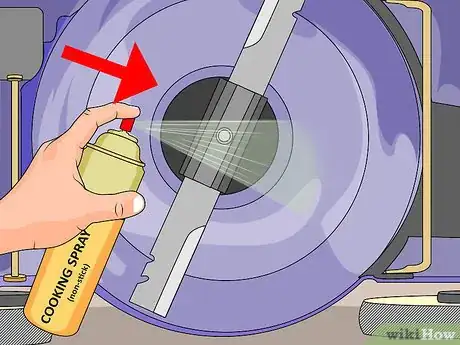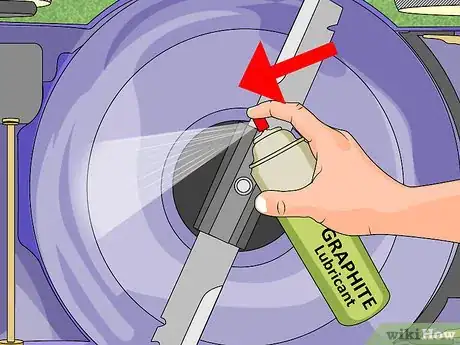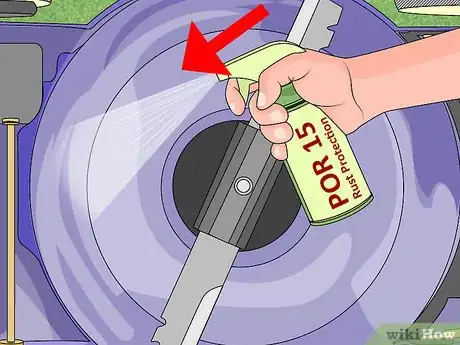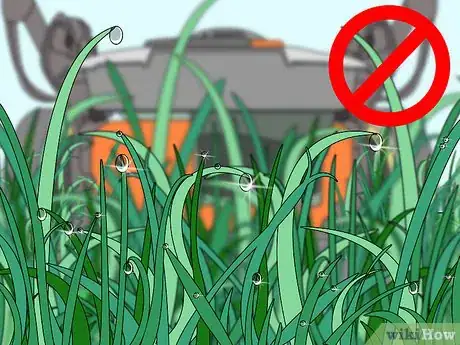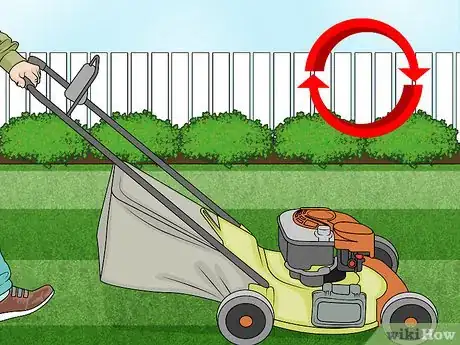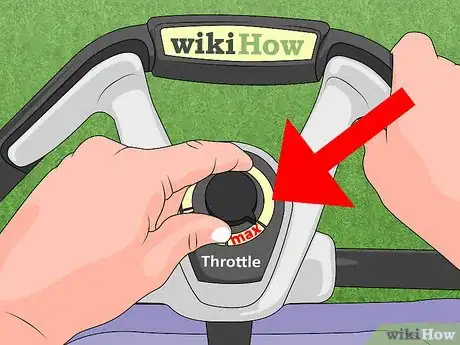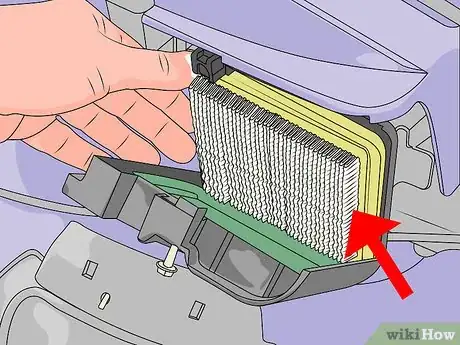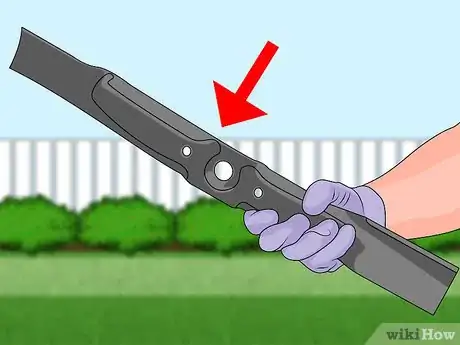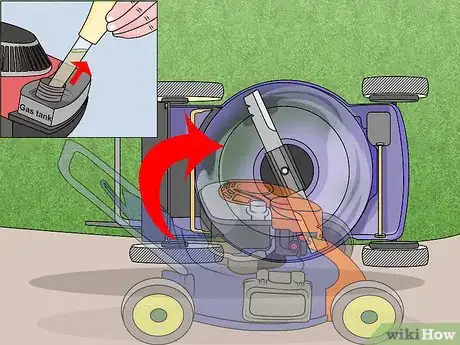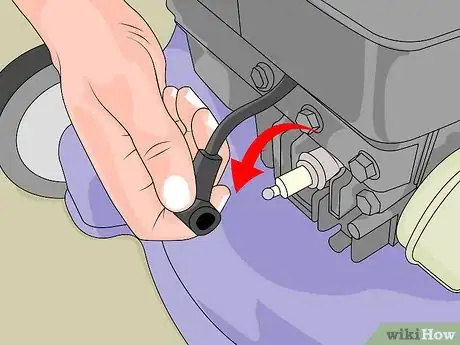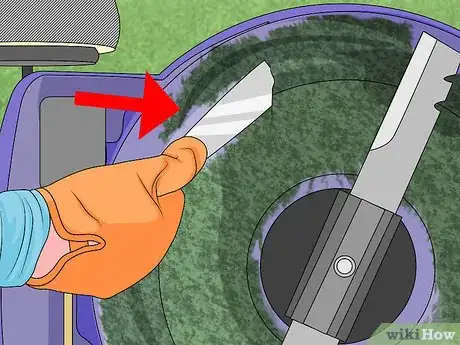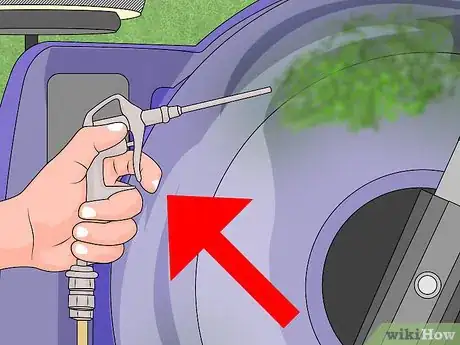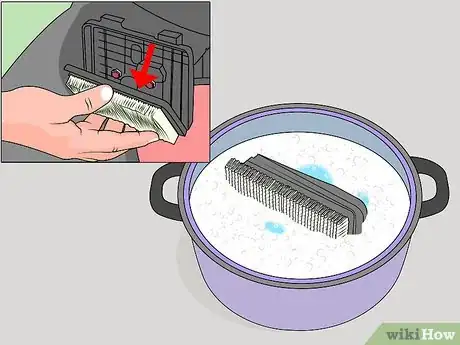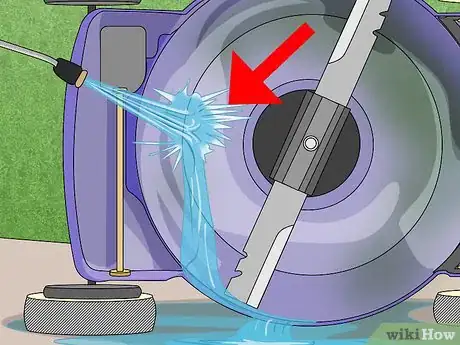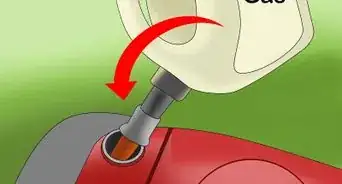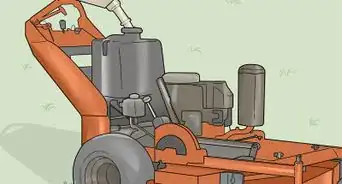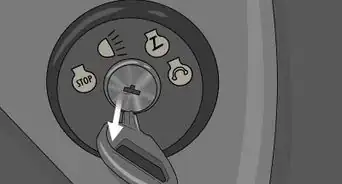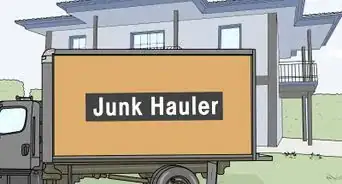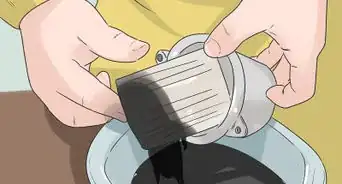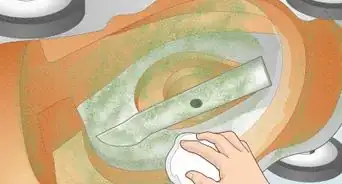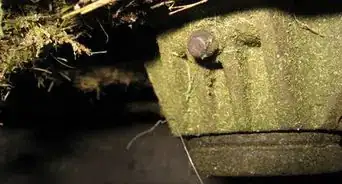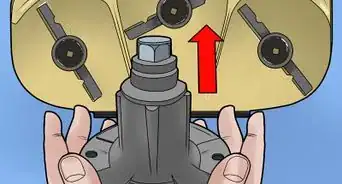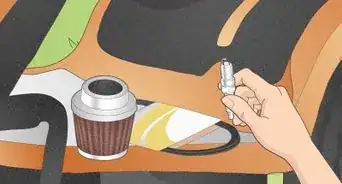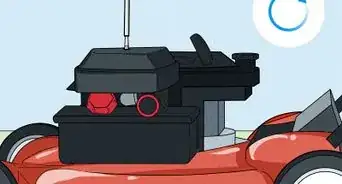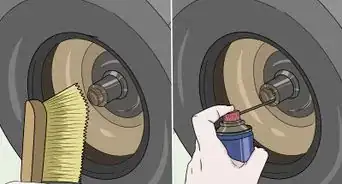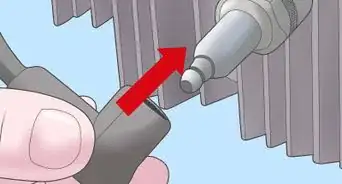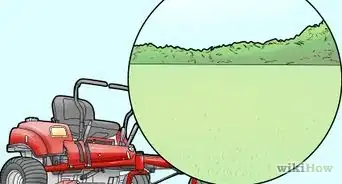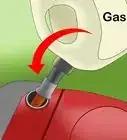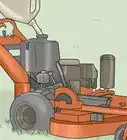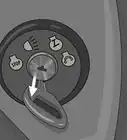This article was co-authored by Anthony "TC" Williams. Anthony "TC" Williams is a Professional Landscaper in Idaho. He is the President and Founder of Aqua Conservation Landscape & Irrigation, an Idaho Registered Landscape Business Entity. With over 21 years of landscaping experience, TC has worked on projects such as the Idaho Botanical Garden in Boise, Idaho. He is a Idaho Registered Contractor and a previously Licensed Irrigator in the State of Texas.
There are 15 references cited in this article, which can be found at the bottom of the page.
wikiHow marks an article as reader-approved once it receives enough positive feedback. In this case, 91% of readers who voted found the article helpful, earning it our reader-approved status.
This article has been viewed 973,955 times.
Clogged again? Darn it! A clogged-up mower deck can leave clumps of grass on the lawn, slow down cutting due to reduced airflow, and even rust the blades of your faithful mower. But don’t worry—it’s pretty simple to deal with. In this article, we’ll walk you through the best, most effective methods for removing and stopping grass buildup under any mower deck so you can get back to a peaceful clump-free mowing experience. Read on for a clump-free, tidy mower!
Things You Should Know
- Remove the spark plug and scrape off caked-on grass from underneath the mower deck using a pry bar.
- To prevent grass buildup from sticking to your mower, spray the deck with non-stick cooking spray, silicone lubricant, or a rust protectant.
- Mow regularly at high throttle when your grass is dry to reduce buildup. Switch to high-lift blades if your mower is compatible.
Steps
Applying a Protective Coating
-
1Spray the deck with non-stick cooking spray for an easy solution. Using cooking oil to coat your mower deck is a cheap, short-term solution that helps reduce grass buildup and makes it easier to scrape the grass away when it accumulates. If you don't have a non-stick cooking spray, pour some vegetable oil onto a clean rag and rub it onto your mower deck.[1]
-
2Apply a commercial lubricant spray to your deck for a more lasting fix. Graphite, silicone, or Teflon sprays are all effective lawn mower deck lubricants. Use your commercial lubricant spray of choice to cover the entire underside of a clean, dry deck, then let dry as directed. The effect is similar to cooking spray but should last longer.[2]Advertisement
-
3Try a rust protection product to keep your blades sharp and deck clump-free. If you tried a lubricant and were unsatisfied with the results, a rust protectant may be just the thing to stop frustrating grass buildup in its tracks.[3] Follow the label on your rust protectant of choice to ensure you apply the solution to your mower deck properly. There are countless rust protection products on the market, but the following are among the most popular:
- A lanolin-based product such as Fluid Film leaves a non-drying coat on your mower deck that helps grass to slide right off. Some people swear by it, while others find that grass sticks even more to this coat, so test it on a small patch first.
- Cold galvanization compound is a highly water-resistant treatment for unpainted metal surfaces. This is a good choice in wet climates, but dirt and debris may still wear it down sooner than the label suggests.
- Other heavy-duty rust protection products have mixed reviews, though POR-15 is one of the better options.
Changing Your Mowing Approach
-
1Mow dry grass to avoid clumping. Whenever possible, mow the lawn when it’s dry. Morning dew or recent rain can make the grass clump and stick to your lawn mower.[4]
- Wait to mow your lawn until a day or 2 after it rains, as grass holds internal moisture even when it feels dry.
- Your lawn will likely be driest mid-day, making it the best time to mow.
-
2Mow around once a week. The longer the grass clippings, the more likely they are to clump. Cutting up to 1/3 of the grass’s height will help reduce frustrating grass buildup from accumulating under your mower deck.[5]
-
3Run the mower at full throttle. Most modern mowers are designed to run at full throttle for the duration of their use. Running your lawn mower at slower speeds makes for a messier cut, as well as reduced airflow which can make it difficult for your mower to eject grass clippings.[6]
-
4Maintain the mower to keep it in good, working condition. The longer you wait between cleanups, the harder the job will be. Check your mower deck regularly to clean off any grass buildup, and make sure that all parts, like the blades and air filter, are in good condition.[7]
- Look out for clogged air filters in particular, as they can increase grass buildup.
- Inspect mowers used for small home lawns (once or twice a week) at least once a month. Check mowers that experience heavy use (several days a week) once every 1-2 weeks.
-
5Switch to a high-lift blade. If grass buildup is still a problem, switching to a high-lift mower blade may be a good option, as they increase airflow and eject the grass clippings with more force. Consult your user's manual to determine which brand and make of high-lift blades are compatible with your lawnmower model.[8]
- Lawnmowers with mulching blades are low to the ground and most vulnerable to accumulating grass buildup.
- High blades are a great switch, as mowers with low blades are bad for lawns, as they scalp the dirt and tear the grass out by the roots.
Cleaning Off Grass Buildup
-
1Access the undercarriage of the mower by lifting the front end. Grab the mower from the front end and prop it up using a mower lift or a piece of wood. Secure your mower in an upright position to prevent it from tipping over and possibly injuring you. Keep the gas tank and oil fill openings on the upper side when tilting your mower to avoid unwanted spillage.[9]
- Emptying the gas tank before you begin reduces the risk of a spill altogether.
-
2Remove the spark plug. Find the spark plug, grab the cap, and pull it off. Then, use a spark plug wrench to unscrew and detach the plug. Turning the lawn mower's blade by hand can start the engine, making it critical to remove the spark plug or disconnect the attached wires before handling the underside of the lawn mower.[10]
- Detach your mower’s blade according to your user's manual for additional safety.
-
3Scrape off caked-on grass using your hands or a pry bar. Put on heavy-duty gardening gloves and remove large clumps of grass by hand or use a large, flat pry bar. Once you’ve dealt with the bigger clumps, scrape the remaining grass out with a metal putty knife or wire brush.[11]
- If the grass is hardened and difficult to scrape off, wet the underside of the deck using a hose to help loosen things up.
-
4Blow off any remaining grass with an air compressor. After scraping, use an air compressor with a nozzle or wand to blow away any pesky loose grass bits. Going over your mower deck with an air compressor ensures a thorough, grass-free clean.[12]
-
5Wash a clogged air filter with soap and water. Locate and remove your mower's air filter according to your user’s manual and check if it needs replacing.[13] If it’s in good condition and is washable, use your air compressor on a low-pressure setting to gently blow off grass and debris, taking care not to tear the filter. Then, add a small amount of dish or degreasing soap in a bucket of water and use it to wash the filter thoroughly.
- Use an air hose to help speed up the drying process. Let the filter dry completely—do not reinstall the air filter wet.
- If you’re unsure whether your mower’s air filter can be washed, check your user’s manual.
-
6Spray the mower deck with a pressure washer if it’s still dirty. If hand scraping isn’t cutting it, spray the underside of the lawn mower with a pressure washer. Leave the mower propped up using a mower lift or piece of wood and let it dry before continuing to the next section.[14]
- You can also spray your mower deck with a garden hose, though it won’t be as effective as using a pressure washer.
- Water can interfere with the air filter or other mechanisms, especially on the sides or top of the mower.[15] Though the underside of your mower is usually designed to withstand occasional washing, it’s best to check your manual if it’s waterproof before pressure washing.
- If you have an air compressor, use it on the mower deck to speed up the drying time.
Expert Q&A
-
QuestionCan I spray the under base with a good metal primer and paint the underbody with a good quality metal paint to make the grass easier to clean off?
 Anthony "TC" WilliamsAnthony "TC" Williams is a Professional Landscaper in Idaho. He is the President and Founder of Aqua Conservation Landscape & Irrigation, an Idaho Registered Landscape Business Entity. With over 21 years of landscaping experience, TC has worked on projects such as the Idaho Botanical Garden in Boise, Idaho. He is a Idaho Registered Contractor and a previously Licensed Irrigator in the State of Texas.
Anthony "TC" WilliamsAnthony "TC" Williams is a Professional Landscaper in Idaho. He is the President and Founder of Aqua Conservation Landscape & Irrigation, an Idaho Registered Landscape Business Entity. With over 21 years of landscaping experience, TC has worked on projects such as the Idaho Botanical Garden in Boise, Idaho. He is a Idaho Registered Contractor and a previously Licensed Irrigator in the State of Texas.
Experienced Landscaper Keeping the underside of the deck well painted and as smooth as possible will help way more than not taking care of it.
Keeping the underside of the deck well painted and as smooth as possible will help way more than not taking care of it. -
QuestionWhat is the best method to turn over a walk-behind lawn mower? To the side, from front to back, or back to front? If from the side, should the oil pan stay on top, or is it nothing to worry about?
 Anthony "TC" WilliamsAnthony "TC" Williams is a Professional Landscaper in Idaho. He is the President and Founder of Aqua Conservation Landscape & Irrigation, an Idaho Registered Landscape Business Entity. With over 21 years of landscaping experience, TC has worked on projects such as the Idaho Botanical Garden in Boise, Idaho. He is a Idaho Registered Contractor and a previously Licensed Irrigator in the State of Texas.
Anthony "TC" WilliamsAnthony "TC" Williams is a Professional Landscaper in Idaho. He is the President and Founder of Aqua Conservation Landscape & Irrigation, an Idaho Registered Landscape Business Entity. With over 21 years of landscaping experience, TC has worked on projects such as the Idaho Botanical Garden in Boise, Idaho. He is a Idaho Registered Contractor and a previously Licensed Irrigator in the State of Texas.
Experienced Landscaper This depends on your particular model. Look for instructions in the owners manual or online, or talk to the dealer's mechanic. Ultimately it's whatever works best for you. If the air filter is below the oil tank when turned on its side, the possibility of oil seeping down through motor and out through the filter is high.
This depends on your particular model. Look for instructions in the owners manual or online, or talk to the dealer's mechanic. Ultimately it's whatever works best for you. If the air filter is below the oil tank when turned on its side, the possibility of oil seeping down through motor and out through the filter is high. -
QuestionAre mowers always supposed to shoot the clipping free of the rotating blades and go into a collection bag or just free to the side? Is it different with a mulch option?
 wikiHow Staff EditorThis answer was written by one of our trained team of researchers who validated it for accuracy and comprehensiveness.
wikiHow Staff EditorThis answer was written by one of our trained team of researchers who validated it for accuracy and comprehensiveness.
Staff Answer wikiHow Staff EditorStaff AnswerIt comes down to personal preference. Many people prefer to attach a collection bag to their mower for a cleaner lawn, while others like to grass-cycle, which leaves those small clippings on the grass as mulch. Grasscycling is the more beneficial option for your lawn, as those clippings have valuable nutrients and decompose quickly.
wikiHow Staff EditorStaff AnswerIt comes down to personal preference. Many people prefer to attach a collection bag to their mower for a cleaner lawn, while others like to grass-cycle, which leaves those small clippings on the grass as mulch. Grasscycling is the more beneficial option for your lawn, as those clippings have valuable nutrients and decompose quickly.
References
- ↑ https://youtu.be/O4cpXc0B31E?t=36
- ↑ https://youtu.be/G-1p7v10-jc?t=23
- ↑ https://youtu.be/pR8LGlYcd24?t=770
- ↑ https://www.bobvila.com/articles/mowing-wet-grass/
- ↑ https://youtu.be/DiEyg4SQEAY?t=22
- ↑ https://www.bobvila.com/articles/lawn-mowing-mistakes/
- ↑ https://youtu.be/E2UurCdH72o?t=17
- ↑ https://youtu.be/-B6Od6cnjOI?t=124
- ↑ https://youtu.be/EQUVSUFH2jQ?t=35
- ↑ http://gardening.tips.net/T005155_Cleaning_Your_Lawn_Mower.html
- ↑ https://youtu.be/Q8VKsSnaDhg?t=26
- ↑ https://plantnative.org/john-deere-gt235-problems.htm
- ↑ https://todayshomeowner.com/lawn-garden/guides/how-to-change-a-lawn-mower-air-filter/4/
- ↑ https://youtu.be/xWWM_dFyydQ?t=65
- ↑ http://gardening.tips.net/T005155_Cleaning_Your_Lawn_Mower.html
- ↑ https://youtu.be/N0cm4PtIYvE?t=224
About This Article
To stop grass buildup under a lawn mower deck, spray the underside with non-stick cooking spray or rub vegetable oil on it. When you can get to a store, buy a graphite, silicone, or Teflon spray, and apply it to the underside. Be sure you start with a clean, dry deck before using these products! Try to mow regularly and when the lawn is dry, since long or wet grass can clump and stick to your mower. Finally, run your mower at full throttle so it’s most effective at throwing the grass clippings away from the mower. For more from our reviewer on buildup under a lawn mower deck, including how to clean off grass that’s already built up, keep reading!
